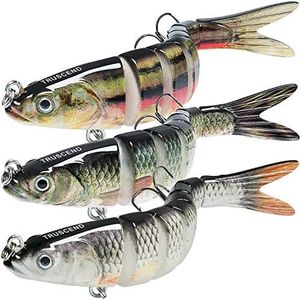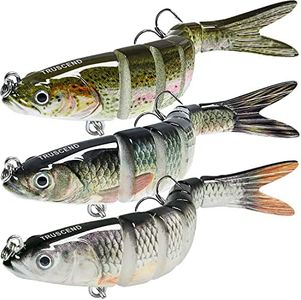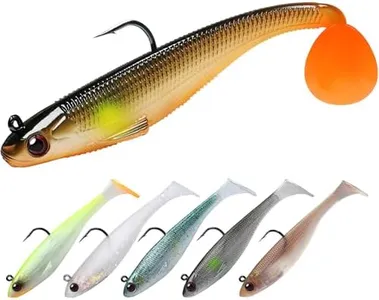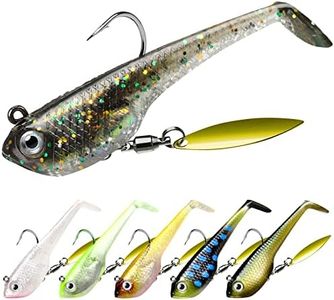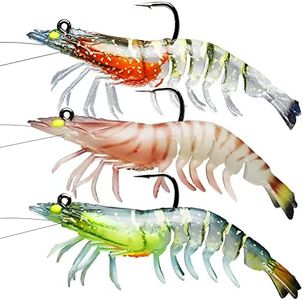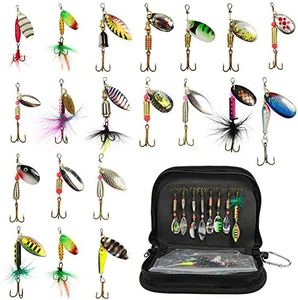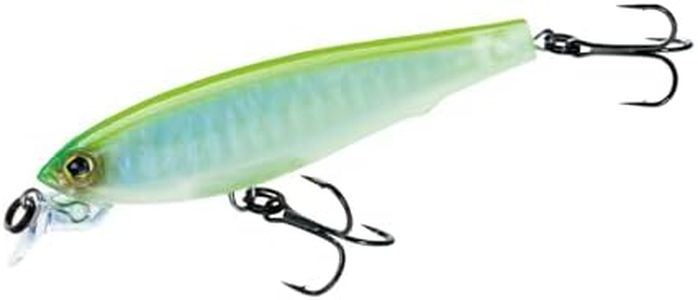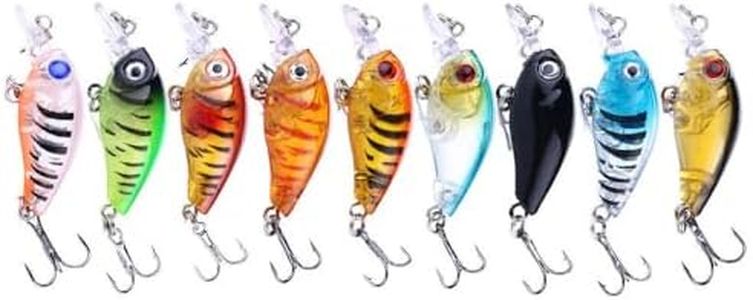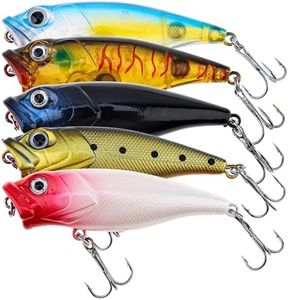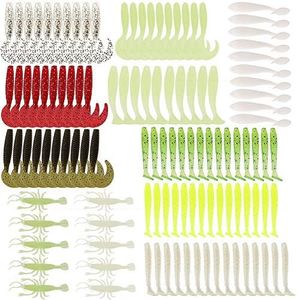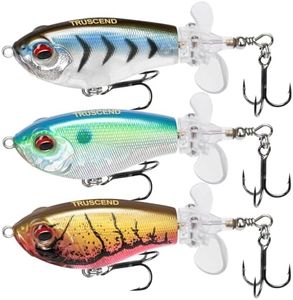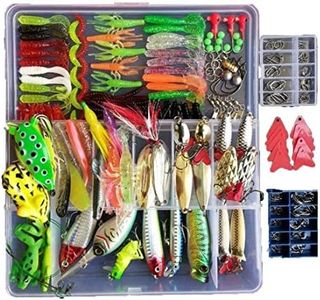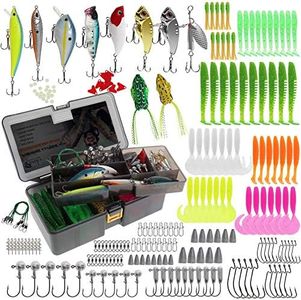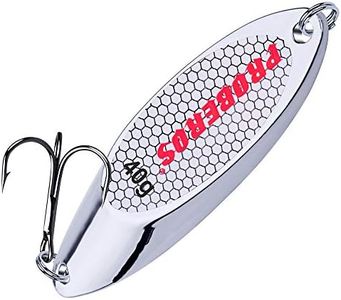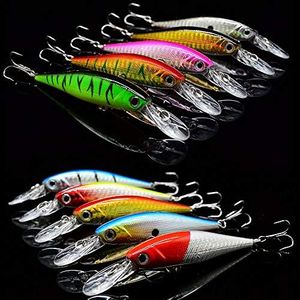We Use CookiesWe use cookies to enhance the security, performance,
functionality and for analytical and promotional activities. By continuing to browse this site you
are agreeing to our privacy policy
10 Best Bass Fishing Lures
From leading brands and best sellers available on the web.Buying Guide for the Best Bass Fishing Lures
Choosing the right bass fishing lure can make a huge difference in your fishing success and enjoyment. The wide variety of lures can seem overwhelming at first, but if you understand the key features and how they relate to the type of fishing you plan to do, you'll be able to make a great choice. Whether you’re fishing in lakes, rivers, or ponds, and regardless of your level of experience, knowing how each lure works can help match your lure to the conditions and the behavior of the fish.Lure TypeLure type refers to the overall design and action of the lure, such as crankbaits, soft plastics, spinnerbaits, jigs, and topwaters. This is important because different types often excel in particular conditions or imitate different prey. Crankbaits are great for covering water quickly, while soft plastics can excel in slow presentations. Spinnerbaits work well in stained water, and topwaters are designed for surface action, perfect in early mornings or evenings. To pick the right one, consider where and how you fish: if you fish around heavy vegetation, soft plastics or weedless jigs might be best; in open water, crankbaits or spinnerbaits could be more suitable.
Size and WeightSize and weight determine how far and deep the lure can be cast and how it moves in the water. This is essential because it affects how visible the lure is to bass and how it mimics their food. Lighter lures (under 1/4 ounce) are best for shallow water or when fish are feeding delicately, while heavier lures (over 1/2 ounce) are ideal for deeper waters or when you need to cast far. To choose, think about your fishing environment: for deep lakes, go heavier, but for shallow ponds or close-range targets, choose lighter lures.
ColorThe color of a lure affects its visibility and attractiveness to fish, depending on water clarity and light conditions. Brighter colors and flashy finishes work well in murky or stained water, as they are easier for fish to see; natural or muted tones are more effective in clear water, where fish can get a better look at what they’re eating. Select color by observing your water conditions: clear water calls for natural, baitfish-like or crawfish colors, while muddy or stained water benefits from bold colors like chartreuse or white.
ActionAction describes how a lure moves when retrieved. Some lures have a tight, quick wobble; others have a wide, rolling action, and some can even be worked erratically. This is important because fish can prefer different types of movement based on time of day, season, or weather. Slower, subtle actions often work best when fish are less active, while aggressive or erratic movements can trigger reaction bites from more active bass. Match the action of your lure to the behavior of the bass: if they seem sluggish, go for soft, slow lures; if they’re chasing bait, use something with a lot of movement.
Hook ConfigurationHook configuration indicates how many hooks, and what kind, are on the lure and how they're positioned. This matters because it impacts your hook-up rate and snag resistance. Treble hooks are common on crankbaits and topwaters, offering a higher chance to catch the fish, but single or weedless hooks are better for fishing in places with lots of plants or underwater logs to avoid getting snagged. Choose according to your fishing area: open water allows for more hooks, while heavy cover calls for weedless or single-hook lures.
